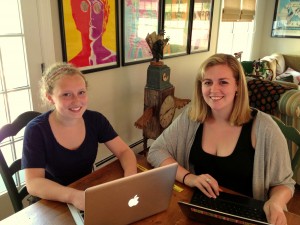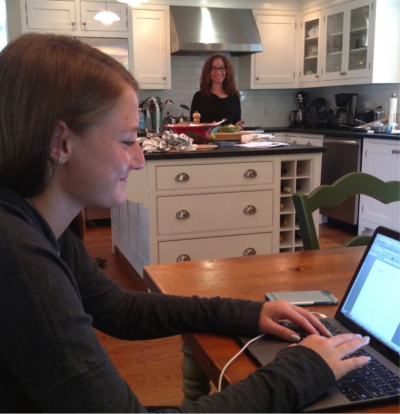The Versatility of Being Virtual
If you’ve never worked predominantly from home, and resort to Google for help, you’ll find info on things like how to set boundaries for yourself or how to maintain your fluctuating motivation. But what does working from home mean for the company you’re working for?
In the case of Company B, we work mostly virtually. Whether we are bloggers or PR consultants or clients, our main sources of communication are email, Skype, webinars and conference calls, rather than in-office meetings and water cooler interactions.
ODesk.com, a global job marketplace, posted on their blog last week about the virtual ad agency, and featured Bonnie in the piece. I really love her quote, “Virtual brainstorms tend to flourish because everyone has to have some skin in the game.”
It’s true. If it’s etiquette to answer an email you’re sent that asks your opinion, you tend to put more thought into your answer, and attempt to offer some insight, rather than a quick, “Looks great!” Though I take a lot of satisfaction out of a, “Looks great!”
But I’ve always shined through personal interactions in the work place, winning people over with jokes, smiles and compliments. When people like you, they’re more willing to help you through a project and show you the ropes. Working virtually has forced me to not only make decisions on my own, but to throw more energy than ever into my work. It showed – in that my first assignment needed a lot of tweaking and re-arranging and editing. And my second got a, “Looks great!”
In the ODesk blog post, the author concludes that small, virtual ad agencies, “designed their business model to seamlessly connect with and source talent from around the globe, allowing them to work with the best people — not just the best people within commuting distance.”
I love that. And I think that’s what Bonnie has done at Company B. For my first big project, I worked with Staci, our media relations consultant based in Chicago. Bonnie said she hadn’t met Staci in person and at first I thought that was odd. For the project though, Staci and I were never out of communication – the internet is always on – and I felt that my work was team work.
This idea isn’t brand new, either. According to globalworkplaceanalystics.com, over 3.1 million people in the US were, “telecommuting” as of October 2012. That’s 2.5% of the American workforce. It’s like a thing.
This is my third week as an almost-virtual worker (I head to Company B HQ once a week and work with another intern). I’m learning about all the different hats I’ll need to be able to wear to do my job, including what it takes to be successful as a virtual worker.
So far, working virtually has proved to be a formidable challenge, establishing rules and deadlines for myself. But the feelings of freedom and the responsibility tend to balance each other out, and I’m slowly falling into an extremely comfortable and productive routine.
I could get used to this.









